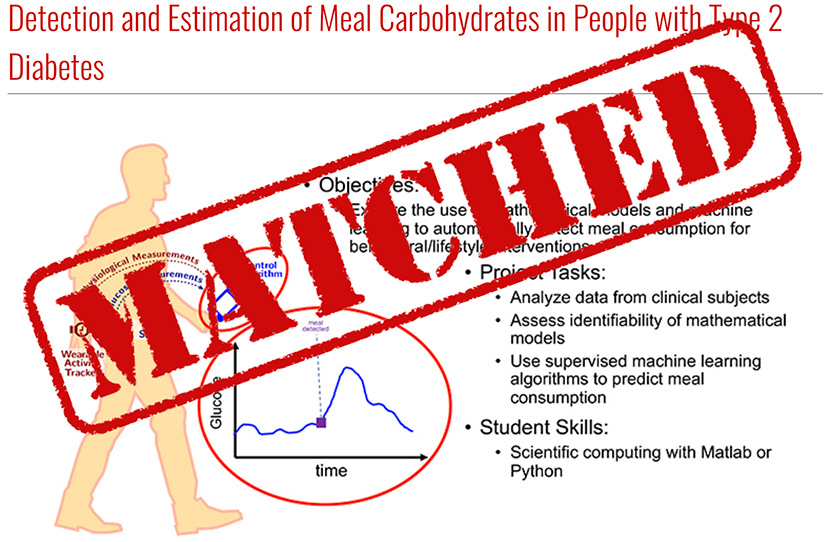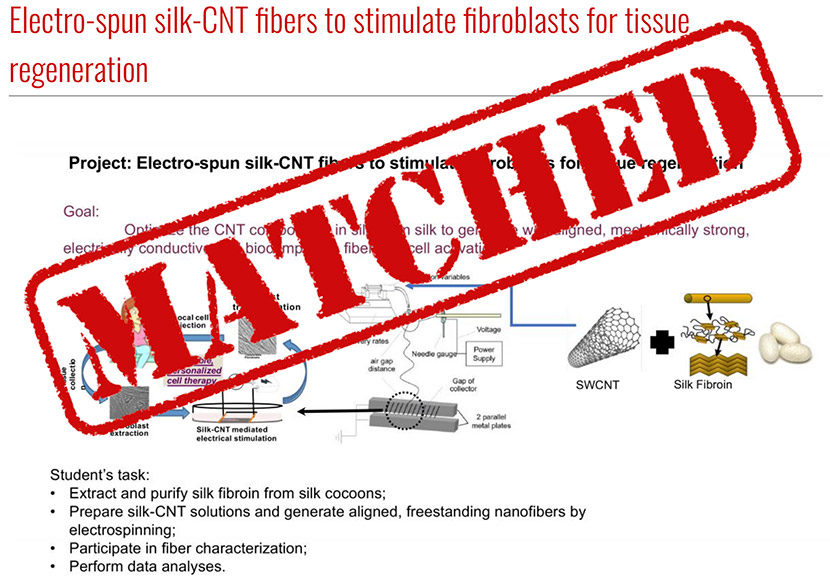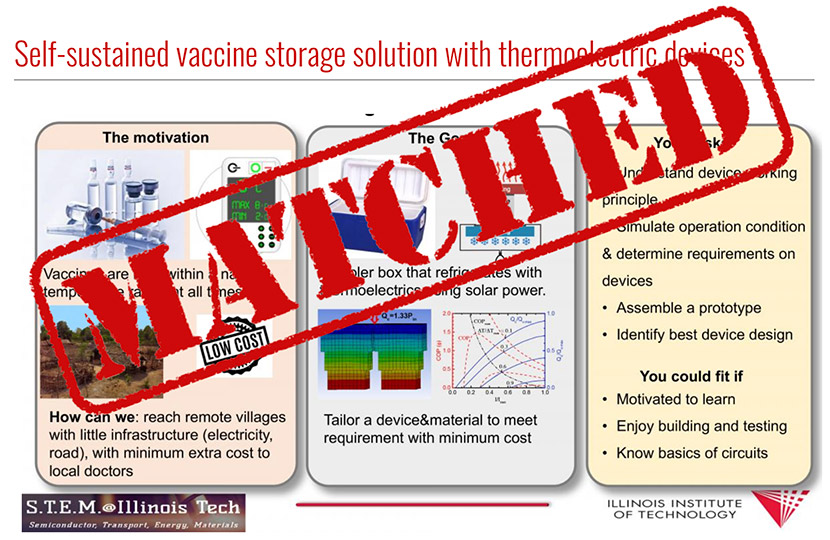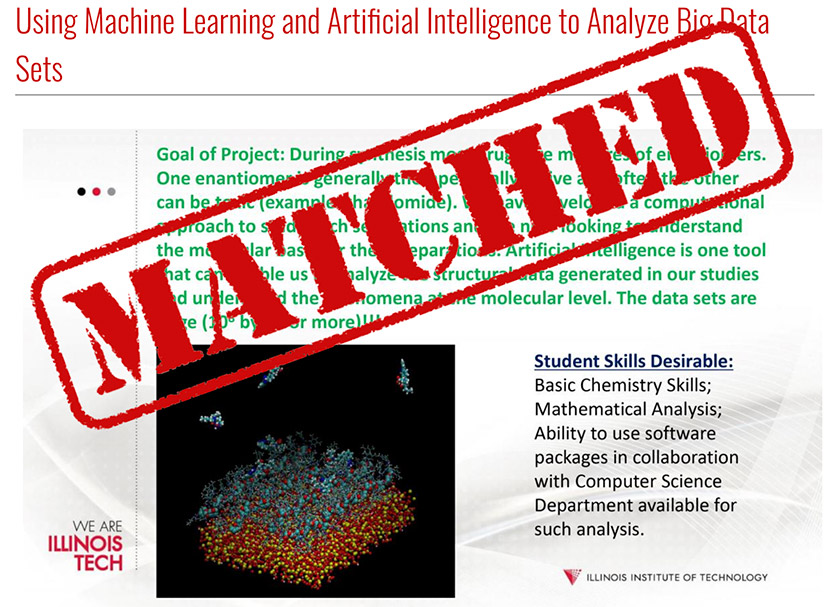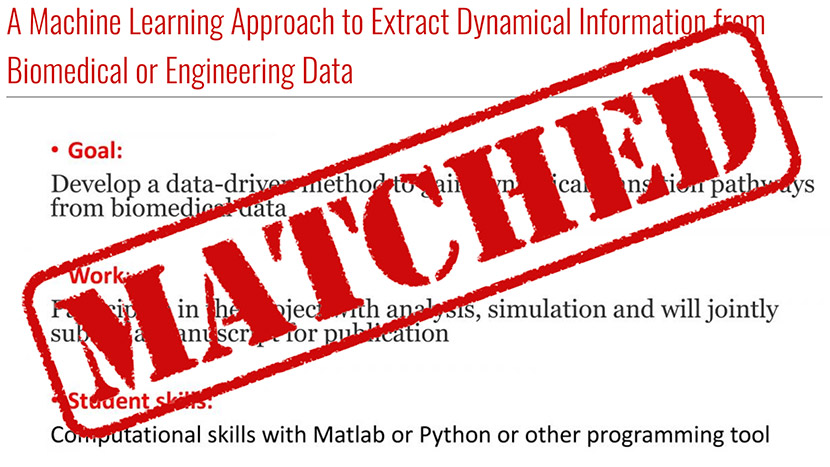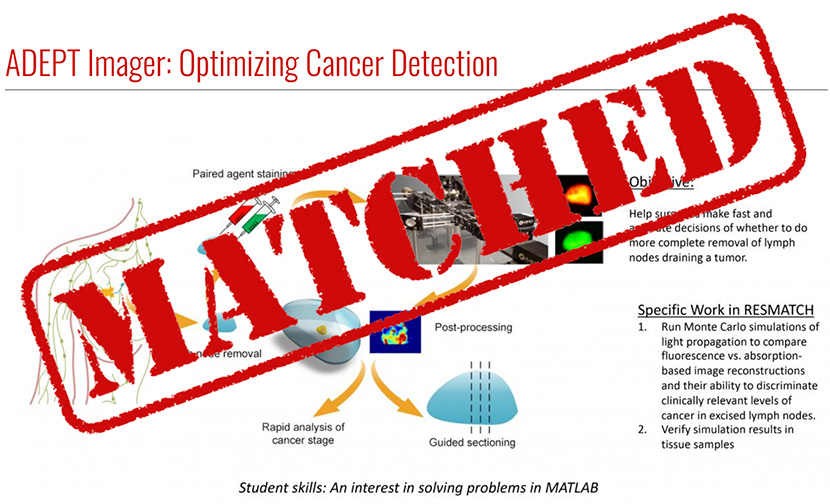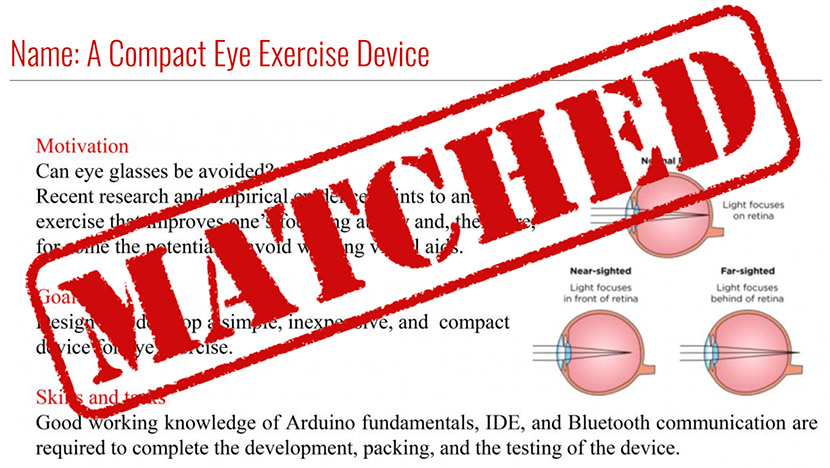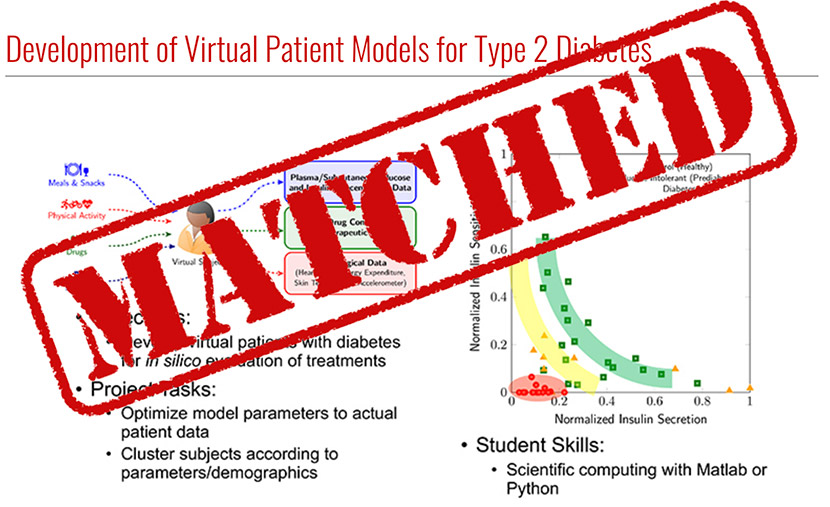Below are RES-MATCH opportunities for undergraduate students in the Fall 2020 semester.
Professor: Mudassir Rashid
Department: Chemical and Biological Engineering
Pulkita Jain, a third year student, matched with this project
Brief Description: Frequent measurement of blood glucose concentration and dietary carbohydrate counting are beneficial in managing Type 2 diabetes. Knowledge of blood glucose trends can shape dietary carbohydrate quotas, though many people with Type 2 diabetes are inaccurate or biased in their carbohydrate reporting, or simply not accustomed to estimating their dietary carbohydrate amounts. Continuous glucose monitoring sensors and machine learning algorithms can automate the process of meal size estimation, improve the accuracy of the carbohydrate estimations, and reduce the involvement of the subject. Students will analyze data and develop algorithms to estimate carbohydrate intake. The technology will have the potential to improve dietary management in diabetes.
Professor: Rong Wang
Department: Chemistry
Ann Engebretson, a fourth year student, matched with this project
Brief Description: Functional biopolymer scaffolds are in high demand for tissue regeneration. In our study, functionalized CNT was incorporated in silkworm silk protein to generate biocomposite fibers by electrospinning. The addition of CNT reinforced the strength of the scaffolds and rendered the fibers electrical conductivity to not only facilitate the electro-spun (E-spun) fiber formation but also grant the fibers an additional functionality that can be utilized for electrical stimulation of fibroblasts from patients with chronic wounds or connective tissue disorder. The developed material and method can be utilized to remedy the dysfunctional fibroblasts for therapeutic treatment of diseases and health conditions associated with collagen disorder. In this project, we aim to vary CNT concentration for achieving a matrix that optimizes the effect of fibroblast stimulation. The student will receive training in (1) extracting and purifying silk fibroin from silk cocoons; (2) preparing silk and silk-CNT solutions and generating aligned, freestanding nanofibers by electrospinning; (3) fiber characterization and data analyses.
Professor: Heng Wang
Department: Mechanical, Materials and Aerospace Engineering
Sohaib Nasir, a sophomore in MMAE, matched with this project
Brief Description: In order to keep their potency, vaccines need to be stored under fairly strict conditions: the temperature needs to be kept at around 5 °C (±2-3 °C). For remote villages in under-developed parts of the world, this creates a big obstacle to bring vaccines to those populations who need them the most. During the transportation and before the vaccines are used, cold chains, even electricity is often not available. Standard portable equipment would push the cost prohibitively high for local health systems with little resources.
Thermoelectric devices can be used for cooling, which is more cost effective and efficient than regular compressor based systems for this application. We could thus offer a solution with insulated boxes cooled by thermoelectric devices, which are powered by solar cells. The challenge is how to tailor a device, from its building materials, that is capable for this job with minimum cost.
In this research, we will first determine what is the minimum requirement on the thermoelectric device for such application, next we will assemble a prototype box with commercially available components to optimize the system design. Finally, we will identify the best thermoelectric device design and ultimately realizing it.
Professor: Sohail Murad
Department: Chemical and Biological Engineering
Syeda Bisma Ali, a junior in Computer Science, matched with this project
Professor: Jinqiao Duan
Department: Applied Mathematics
Stanley Nicholson, in Applied Mathematics, matched with this project
Brief Description: We will devise a data-driven method to learn the stochastic governing law underlying a gene regulation dataset, and then extract information about the most probable gene transcription pathway. This will be based on recent theoretical advances in our Lab for Stochastic Dynamics & Computation @IIT. The major task of this project is then to develop a computational code to apply our theoretical methodology to a dataset (either simulated or real dataset). In collaboration with a colleague at Argonne National Laboratory, our team will finish this project and submit a manuscript for publication.
Professor: Kenneth Tichauer
Department: Biomedical Engineering
Hang Nguyen, a sophomore in Biomedical Engineering, matched with this project
Brief Description: The lymph system is the predominant route through which cancer spreads for many cancer subtypes. Once cancer has spread from the primary tumor site, surgery is generally no longer “curative.” However, in some cases, it can be if the spread is confined to the nearby lymph nodes, which can be located and removed surgically. To identify cancer spread to lymph nodes, many surgical procedures have adopted a “sentinel lymph node biopsy” protocol, in which the first lymph node draining the tumor is removed and tested for cancer burden. If cancer burden, a more advanced lymph node dissection is often performed (more lymph nodes are removed). However, accurate lymph node cancer detection can take 1-2 days to process the tissue, meaning that patients often have to return for additional surgery if they present with a positive sentinel lymph node. We have developed an optical imaging technology (ADEPT) that has the potential to accurately assess lymph nodes for cancer within 10 min. Much preliminary data is already collected. This project will build off the preliminary data to help identify optimal strategies for processing the data (image reconstruction), such that ultimate cancer detection sensitivity and specificity can be attained. The requirements of the student are flexible to the COVID-19 situation. If warranted, the project can be moved forward remotely through Monte Carlo simulations of light propagation.
Professor: Ali Khounsary
Department: Physics
Talhah Waheed, a freshman in Electrical and Computer Engineering, matched with this project
Brief Description: Many ideas have been proposed and promoted over the years to improve eye’s ability to focus (to cure the so-called convergence insufficiency). Based on recently published large-scale randomized clinical trials, only one of the ideas is effective
In this project, we prototype an electro-optical, easy-to-use, device that operates based on an empirically shown eye exercise protocol. This pocket size device could be patented and commercialized. The expected cost per unit is under $50. Another possible application of this device (which we intend to pursue after a prototype is built) is for its possible use by astronauts to combat the well-documented structural changes in the eye (flattening of the back of the eyeball) which occurs during prolong space travels and stays.
The project starts by reviewing some background information provided by the faculty including some existing ideas, obtain the necessary electronic parts, assemble, program, and test. A solid background in electronics and coding is required; familiarity with CAD and 3D printing are helpful.
Professor: Mudassir Rashid
Department: Chemical and Biological Engineering
Sriya Avadhanam, a first year psychology student, matched with this project
Brief Description: Type 2 diabetes is a complex heterogeneous disease. The varying manifestation of Type 2 diabetes, and the diverse risks of complications, results in numerous subtypes that affects treatment selection. Characterizations of distinct subtypes of diabetes can be accomplished by clustering subjects based on clinical parameters. To improve classification, the clinical parameters stratifying subtypes of Type 2 diabetes can be augmented with personalized estimates of glucose-insulin model parameters. Developing models of diabetes is critical to modeling the heterogeneity within Type 2 diabetes. The models can be used to generate refined information that improve the stratification of diabetes. Students will work on developing models of diabetes and novel algorithms for the subclassification of Type 2 diabetes.


